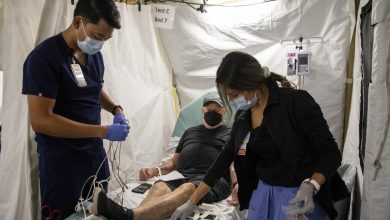Scientists May Have Discovered the Cause of Autism

Researchers may have found a connection between fatty acids in umbilical cord blood and a child’s chance of autism, but more research is still needed, according to a Yale expert who spoke with Newsweek about the subject.
Researchers from the University of Fukui examined the relationship between autism scores in 200 children and polyunsaturated fatty acids (PUFA) in umbilical cord blood samples in an effort to shed light on potential causes of autism.
They consider this new information to be “crucial” to comprehending, diagnosing, and maybe curing autism spectrum disease (ASD).
DiHETrE, a specific molecule found in umbilical cord blood acid, was found to have “strong implications” for the severity of ASD.
“The levels of diHETrE, an arachidonic acid-derived diol, in cord blood at birth significantly impacted subsequent ASD symptoms in children and were also associated with impaired adaptive functioning,” said Hideo Matsuzaki, a professor of child mental development at the University of Fukui and one of the study’s authors’ statements.
“These findings suggest that the dynamics of diHETrE during the foetal period is important in the developmental trajectory of children after birth.”
In particular, the researchers discovered that low levels of diHETrE were connected to children’s repetitive and constrictive behaviours, whereas greater levels were linked to challenges in social interactions. Interestingly, there was a stronger association found in girls compared to boys.
As soon as the babies were born, samples of the umbilical chord were taken and stored. These same children’s moms assisted in the assessment of their ASD symptoms when the children were six years old.
Based on these findings, the researchers hypothesise that assessing a baby’s diHETrE levels at birth may soon prove to be an effective method of determining the child’s likelihood of having ASD.
“The effectiveness of early intervention for children with ASD is well established and detecting it at birth could enhance intervention and support for children with ASD,” Matsuzaki stated.
Inhibiting diHETrE metabolism during pregnancy, he added, may be a promising strategy to prevent ASD features in offspring; however, further study in this area is required.
The work expands on past research in mice models that revealed PUFA and their metabolites during pregnancy play a critical role in the development of ASD. It was published in Psychiatry and Clinical Neurosciences.
“CYP metabolism forms both epoxy fatty acids (EpFAs), which have anti-inflammatory effects, and dihydroxy fatty acids, or ‘diols,’ which have inflammatory properties,” explained Matsuzaki, outlining the rationale for the study.
“We hypothesised that the dynamics of CYP-PUFA metabolites during the foetal period, that is, lower EpFA levels, higher diol levels, and/or increased EpFA metabolic enzymes would influence ASD symptoms and difficulties with daily functioning in children after birth.”
These results, according to the study’s authors, “open a promising avenue” for solving the puzzles surrounding ASD and could result in better diagnosis and care.
James McPartland, a professor of child psychiatry and psychology at Yale University School of Medicine, told Newsweek that although he acknowledges the research topic being studied in this study is emerging, the study does not yet offer data that can be used to diagnose ASD.
This is an exploratory study looking into currently unestablished and poorly understood potential causes for the clinical symptoms of autism. Its value is in formulating theories for more thorough research in the future, but it offers little data from which to draw conclusions or direct clinical judgement,” the speaker stated.
McPartland further pointed out that the majority of autism researchers and doctors do not see prevention of ASD as a goal. Rather, the main goal is to progress research and gain knowledge that can improve the lives of those with autism and their families.
It should be noted that when utilised in isolation, the autism diagnostic observation schedule used in this study is insufficiently sensitive and specific. In accordance with DSM-5 diagnostic criteria, it is most dependable when paired with parent interviews and clinician judgement,” he continued.
It is impossible to say what percentage of the people under study would truly fit the diagnostic criteria for autism from the data that has been made public. According to him, this means that the study offers very little insight into the possible diagnostic value of these techniques.




